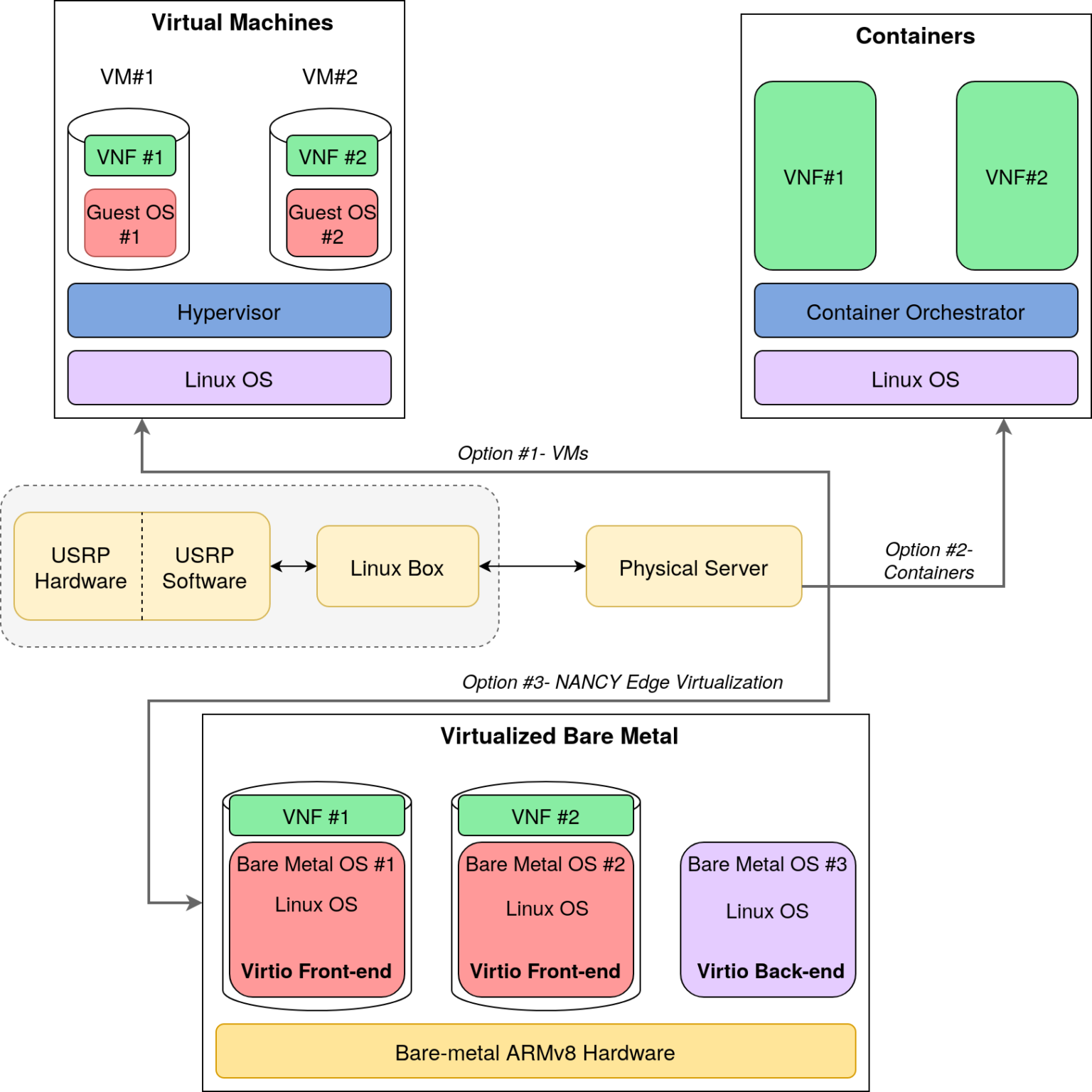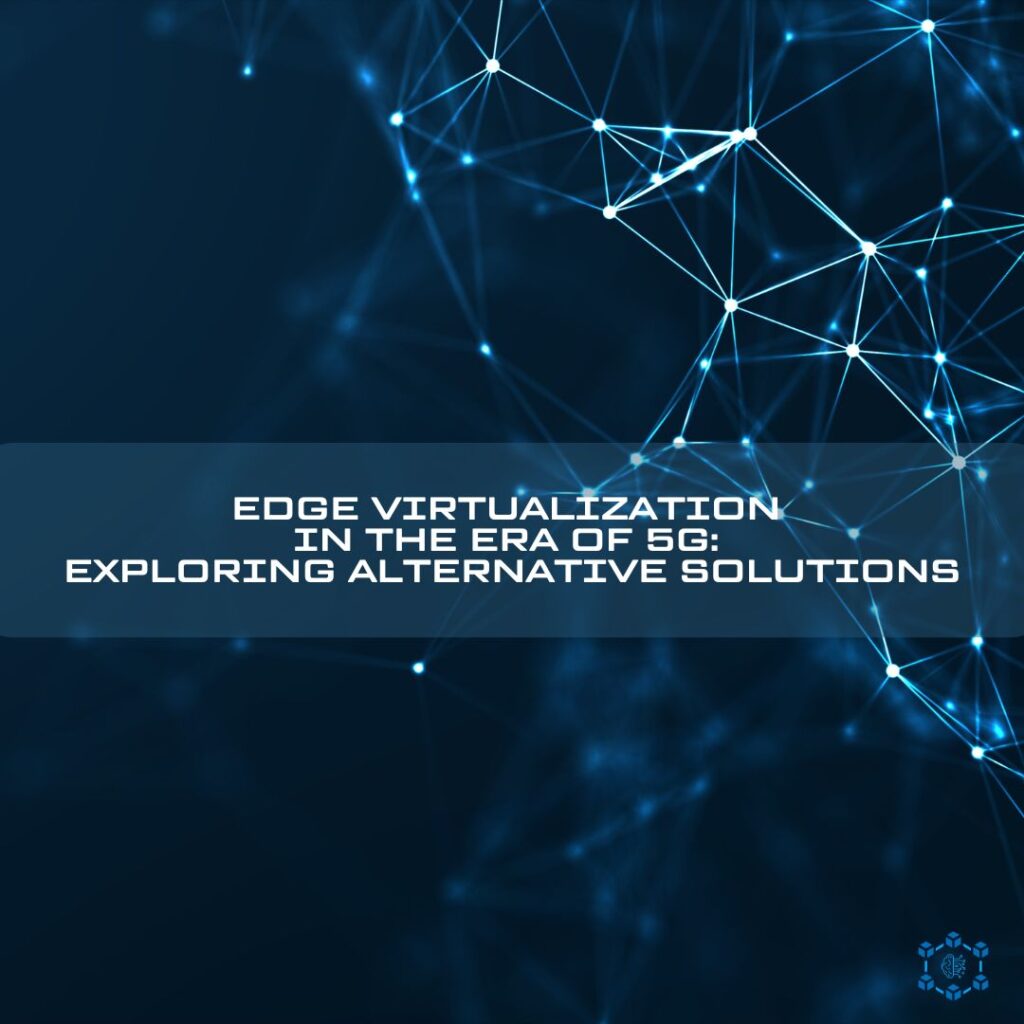Authors: Anna Panagopoulou
Alvise Rigo
Organization: VOS
In the rise of next-generation 5G and B5G networks, the integration of advanced technologies is transforming the landscape of mobile communications and beyond. Central to this transformation is the edge domain, which plays a crucial role in enhancing network performance, reducing latency, and enabling real-time data processing.
New, emerging architectural paradigms like the Multi-access Edge Computing (MEC) focus on exploiting the full potential of the edge domain by mandating that computational tasks be performed at edge servers, in close-proximity to end-users. In this new computing paradigm, the edge domain has a pivotal role, coupled with embedded architectures that are particularly suitable at this layer of the network stack, being well-known for their energy-efficient, rapid, and parallel data processing capabilities.

At the same time, from the Cloud to the Edge the computational tasks are deployed in the abstracted form of Virtual Network Functions (VNFs), as entities that are decoupled from proprietary and specialized hardware. Across the network, there are usually two main mechanisms to implement the VNFs, being either Virtual Machines (VMs) or Containers.
Regarding VMs, they are the most traditional approach to implementing Virtualization. At their basis, VMs emulate the physical hardware to accommodate multiple Operating Systems (OSes) on a single server. While being true that with VMs each OS remains completely isolated from others, one cannot disregard that this whole emulation of the physical server introduces a significant overhead, which leads to both performance and scalability challenges.
More recently, Containers have emerged as a modern virtualization solution in the 5G ecosystem. The also-known-as Cloud-native approach is a very lightweight alternative to classic, VM-based Virtualization. With Containers, the applications are deployed in the form of micro-services directly on the physical hardware, and thus demonstrate close-to-native performance. However, in terms of security, Containers are only isolated at the OS level as they share the same kernel, which is far from ideal in production-ready deployments or where security and data privacy is of utmost importance.
Alternatively, to these standard ways of virtualization, NANCY also explores a virtualization solution that focuses on deployments to the edge domain, taking into consideration the peculiarities of embedded architectures. Newly released embedded System-on-a-chip (SoCs) tend to have heterogeneous architectures, sporting a respectable number of cores, sometimes characterized by slightly different implementation and clocks, even located across multiple physical chips. This trend has led researchers in a first phase and eventually system integrators to consolidate diverse functionalities in the same platform, thanks to the ability to concurrently execute multiple bare-metal OSes on the same platform each characterized by its own field of application. This has led to the realization of power-efficient solutions for typical embedded use cases, where the device is a self-contained system that has little interaction with the surroundings like, for instance, in the case of an automotive cluster.
In light of this, NANCY has pushed this concept further, reshaping it for orchestration-driven virtualization, where the system is not anymore, a self-contained entity, but rather a component of a greater machinery. In NANCY, those separate bare-metal OSes will be adjusted to host the VNFs, in the form of VMs but deployed directly on the hardware. The deployment can be driven by complex forms of orchestration, as those foreseen by NANCY and that will be object of future posts in this blog.
One of the major challenges brought by this new form of virtualization for the Edge domain is about preserving the abstracted nature of VNFs that are now asked to run on bare-metal embedded devices. Neglecting this would make the VNFs pointless, as their ability to run unmodified in different execution environments would not be granted anymore. In order to tackle this challenge, NANCY has extended an existing and well-established para-virtualization framework, called Virtio, to also work across isolated OSes, allowing to decouple the backend (a Linux process) from the front-end (a Linux kernel driver).
So far, the ideas depicted in this post have been implemented in an emulation environment and the first positive results are being analyzed in a dedicated paper that is in the making. NANCY will also port the solution to the powerful TI AM69 SoC and will also develop a new architectural component targeting to open this new form of virtualization to the high-level NANCY orchestrators.





